- History of Cherry Cultivation
- Cherry Varieties
- 1. Bing Cherries
- 2. Rainier Cherries
- 3. Black Cherries
- 4. Montmorency Cherries
- 5. Royal Ann Cherries
- 6. Stella Cherries
- 7. Sweetheart Cherries
- Sweet Cherry
- Sour Cherry
- Introduction
- Varieties
- Growing Sour Cherry
- Harvesting
- Uses
- Conclusion
- Health Benefits of Cherries
- Growing Cherries in Your Garden
- 1. Choose the right variety
- 2. Provide adequate sunlight
- 3. Prepare the soil
- 4. Plant with care
- 5. Water regularly
- 6. Prune and thin
- 7. Protect from pests and diseases
- 8. Harvest at the right time
- 9. Enjoy your cherries!
- Cherry Pests and Diseases
- Pests
- Diseases
- Harvesting and Storing Cherries
- Question-answer:
- What are the different types of cherries?
- How do you grow cherries in the garden?
- What are the different varieties of cherries?
- How long does it take for cherry trees to bear fruit?
- What are the advantages of growing cherries in the garden?
- What are the common pests and diseases that affect cherry trees?
- Can cherries be grown in containers or pots?
- Video: 8 Types of Cherries / Cherries variety / Cherries types / Cherries Cultivation / Cherries Trees

Cherries are one of the most popular and beloved fruits around the world. They not only taste delicious, but they are also packed with nutrients and antioxidants, making them a healthy choice for any diet. Whether you have a large backyard or a small balcony, growing cherry trees in your garden can be a rewarding and enjoyable experience.
There are several different types and varieties of cherries that you can choose to grow, each with its own unique characteristics. Sweet cherries, also known as Prunus avium, are the cherries most commonly found in grocery stores. They have a rich, sweet flavor and are perfect for eating fresh.
Sour cherries, or Prunus cerasus, are smaller and firmer than sweet cherries, with a tart and tangy flavor. They are often used in baking and cooking, as well as for making jams and preserves.
When it comes to choosing a cherry tree for your garden, there are a few factors to consider. First, think about the climate and growing conditions in your area. Sweet cherries prefer a temperate climate with warm summers and cold winters, while sour cherries are more cold-hardy and can tolerate colder temperatures.
Another important consideration is the size of the tree. Sweet cherry trees can grow quite large, reaching heights of 30 feet or more. If you have limited space or are growing cherries in containers, look for dwarf or compact varieties that are better suited for smaller spaces.
History of Cherry Cultivation
The cultivation of cherries has a long and rich history, dating back thousands of years. Cherries are believed to have originated in the region now known as Turkey and parts of Western Asia. Archaeological evidence suggests that cherries were consumed by humans as early as 3000 BCE.
The ancient Greeks and Romans were known to appreciate the sweet and tart flavor of cherries and spread their cultivation across Europe. They cultivated different varieties of cherries, including the sweet cherry (Prunus avium) and the sour cherry (Prunus cerasus).
During the Middle Ages, cherry cultivation spread further across Europe, with monks playing a significant role in growing and propagating different cherry varieties. The spread of cherry cultivation was also facilitated by trade and exploration, bringing cherries to new regions like England and the Americas.
In the 17th and 18th centuries, cherry cultivation continued to expand, with different cherry varieties being grown for various purposes. Some cherries were primarily used for making preserves and desserts, while others were cultivated for their use in medicines and herbal remedies.
Today, cherries are cultivated in many parts of the world, including Europe, Asia, North America, and Australia. They are enjoyed fresh, used in various culinary dishes, and processed into products like cherry preserves, cherry juice, and cherry pies.
The cultivation of cherry trees has also become an important industry, with numerous cherry festivals and events taking place in different regions to celebrate the cherry harvest. This demonstrates the continued popularity and significance of cherries in many cultures around the world.
Cherry Varieties
There are many different cherry varieties that can be grown in the garden. Each variety has its own unique characteristics and flavor profile. Here are some of the most popular cherry varieties:
1. Bing Cherries
Description: Bing cherries are large, firm, and dark red in color. They have a sweet and juicy flavor, making them one of the most popular cherry varieties.
Ripening Time: Mid-season
2. Rainier Cherries
Description: Rainier cherries are yellow with a bright red blush. They have a sweet and delicate flavor, often described as the best-tasting cherry variety.
Ripening Time: Mid-season
3. Black Cherries
Description: Black cherries are small and dark purple to black in color. They have a rich and sweet flavor, perfect for sauces and desserts.
Ripening Time: Late-season
4. Montmorency Cherries
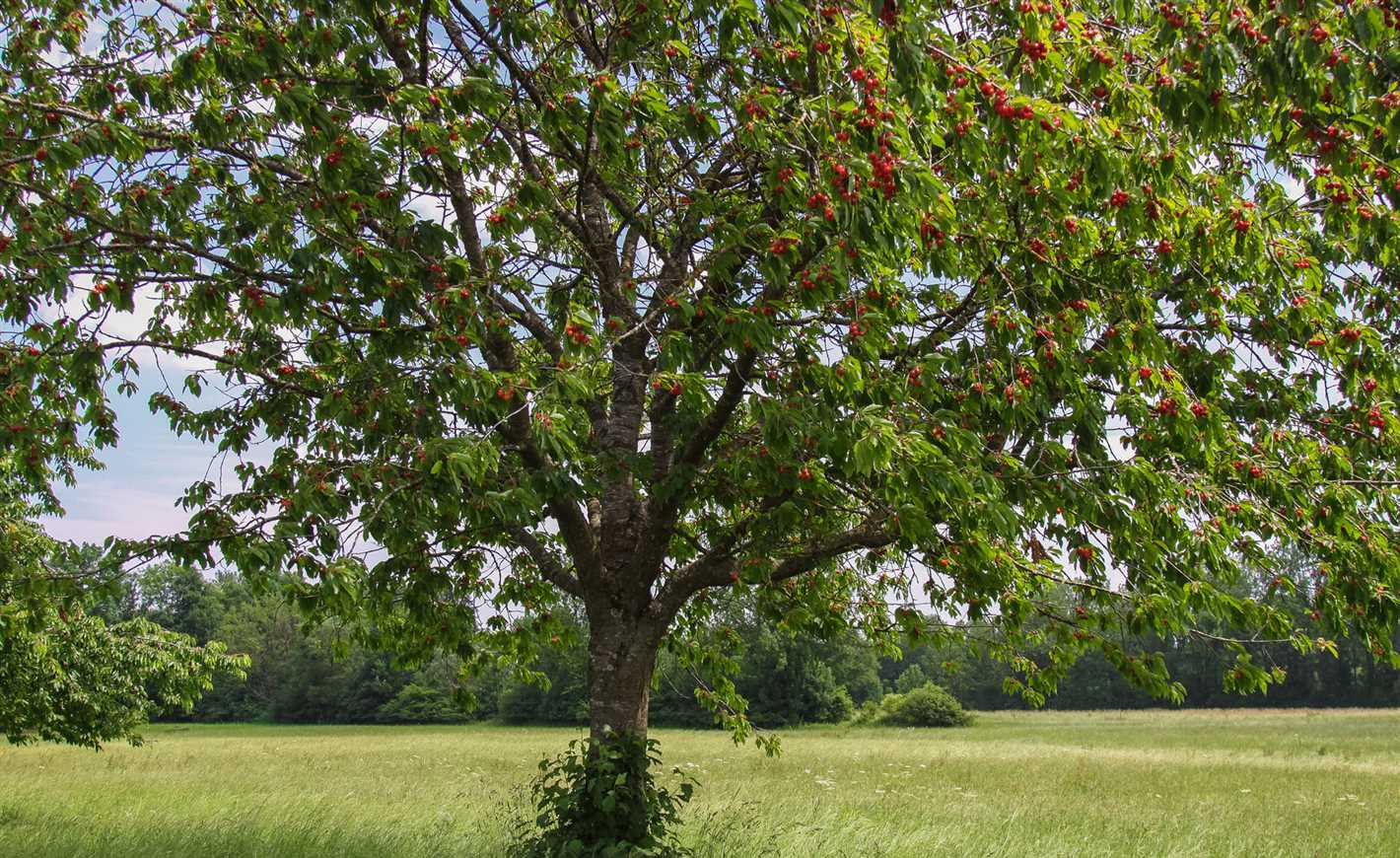

Description: Montmorency cherries are bright red and tart in flavor. They are commonly used for baking, making jams, and pie fillings.
Ripening Time: Early-season
In addition to these varieties, there are also sour cherries, sweet cherries, and dwarf cherry varieties available for growing in the garden. It is important to choose a variety that is well-suited to your climate and growing conditions to ensure a successful harvest.
5. Royal Ann Cherries
Description: Royal Ann cherries are yellow with a red blush and are often used for making maraschino cherries. They have a sweet and slightly acidic flavor.
Ripening Time: Mid-season
6. Stella Cherries
Description: Stella cherries are dark red to almost black in color and have a sweet, rich flavor. They are self-fertile, meaning they do not require another cherry tree for pollination.
Ripening Time: Early-season
7. Sweetheart Cherries


Description: Sweetheart cherries are dark red and heart-shaped, hence their name. They have a sweet flavor with a hint of tartness.
Ripening Time: Mid-season
When selecting cherry varieties for your garden, consider factors such as taste preference, pollination requirements, and ripening times.
Sweet Cherry
Sweet cherry, also known as wild cherry or black cherry, is a popular variety of cherry that is widely grown in gardens. It has a sweet and juicy flavor, making it a favorite among fruit lovers.
Sweet cherry trees are medium-sized and can reach a height of up to 20-30 feet. They have a spreading habit, with branches that grow in a rounded shape. The leaves are dark green and glossy, providing an attractive backdrop for the clusters of cherries that form along the branches.
There are several different types and varieties of sweet cherry, each with its own unique characteristics:
- Bing: Bing cherries are one of the most popular varieties of sweet cherry. They have a deep red color and a rich, sweet flavor. Bing cherries are commonly used for baking and canning, but they are also delicious eaten fresh.
- Rainier: Rainier cherries are known for their pale yellow color and sweet, delicate flavor. They have a firm texture and are often considered a gourmet cherry. Rainier cherries are best eaten fresh and are a popular choice for fruit salads.
- Lapins: Lapins cherries are large and dark red in color. They have a sweet, rich flavor and a firm texture. Lapins cherries are excellent for eating fresh, and they also make a great addition to desserts and preserves.
Sweet cherries are typically harvested in the late spring or early summer, depending on the variety and the climate. They should be picked when they are fully ripe, as they do not continue to ripen once they are off the tree.
When planting sweet cherry trees in the garden, it is important to choose a sunny spot with well-draining soil. They require regular watering, especially during dry periods, and benefit from the addition of mulch around the base of the tree to help retain moisture.
In conclusion, sweet cherries are a delicious and popular variety of cherry that can be grown in the garden. With their sweet flavor and attractive appearance, they are a favorite among fruit enthusiasts. Whether eaten fresh, used in baking, or turned into preserves, sweet cherries are a delightful addition to any garden.
Sour Cherry
Introduction
Sour cherry, also known as tart cherry or Prunus cerasus, is a species of cherry native to Europe and Asia. It is widely cultivated for its tart fruit and used in various culinary preparations, such as pies, jams, and sauces. Sour cherries are also known for their potential health benefits due to their high content of antioxidants and anti-inflammatory compounds.
Varieties
There are several popular varieties of sour cherry, each with its own unique characteristics:
- Montmorency: This is the most widely grown variety of sour cherry in North America. It has bright red fruit with a tart flavor, making it ideal for cooking and baking.
- Morello: Morello cherries are darker in color and have a deeper flavor compared to other sour cherry varieties. They are commonly used for making preserves and desserts.
- Balaton: Balaton cherries are a Hungarian variety that have gained popularity for their intense flavor and sweetness. They are often used in fresh eating and are also suitable for cooking.
Growing Sour Cherry
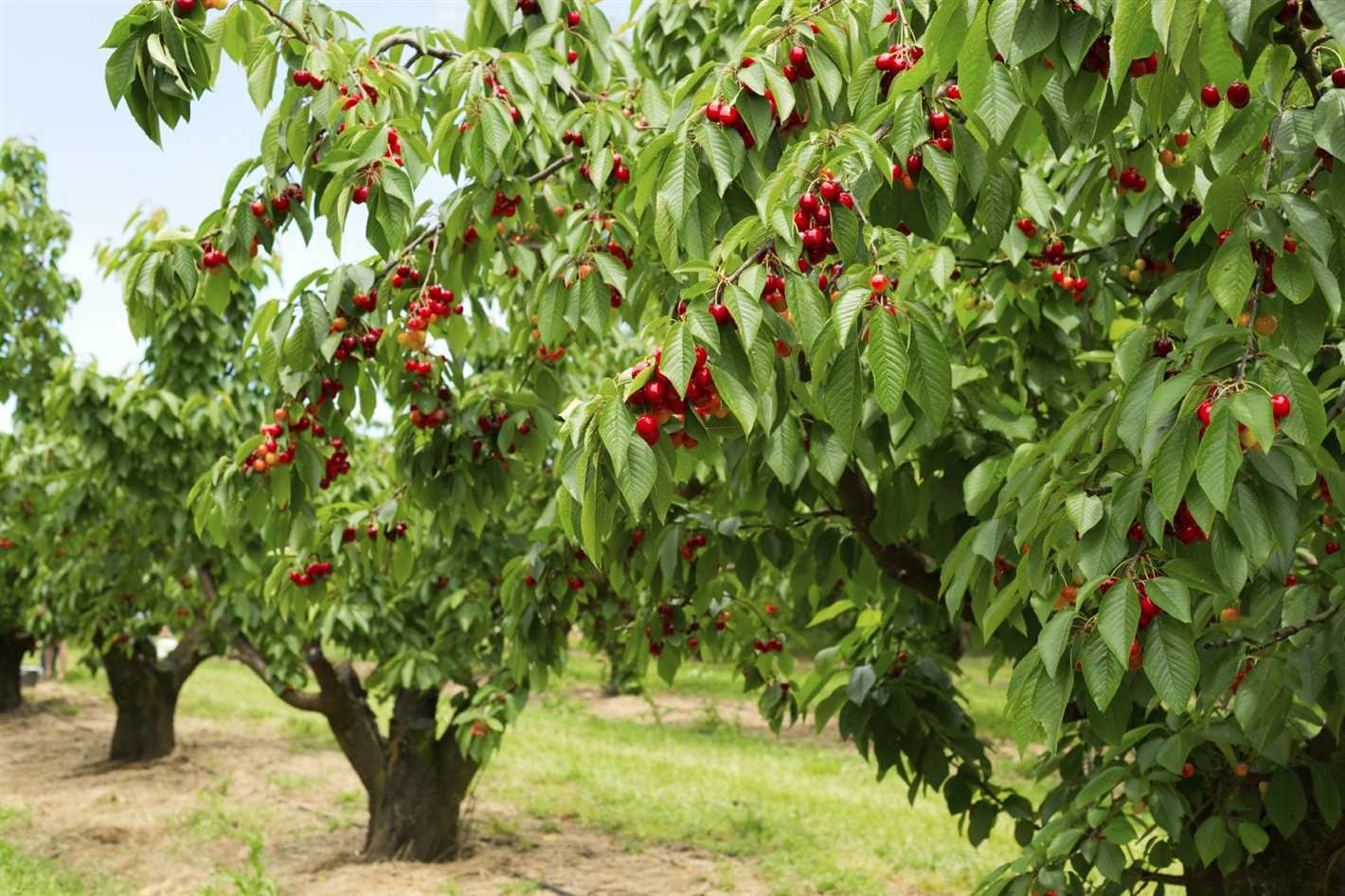

Sour cherry trees require a moderate climate with cold winters and mild summers. They are typically hardy and can tolerate a variety of soil conditions, but prefer well-drained soil. When selecting a site for planting, it is important to choose a location that receives full sun.
Propagation of sour cherry trees can be done through grafting or from seed. Grafted trees are preferred as they tend to bear fruits sooner and are more disease-resistant. The trees should be planted in early spring or late fall, and proper care should be taken to ensure their health and productivity.
Harvesting
Sour cherries are usually ready for harvest in late spring or early summer, depending on the variety and climate. The fruit should be picked when fully ripe but still firm. Overripe cherries tend to lose their tartness and become mushy.
Uses
Sour cherries are a versatile fruit that can be used in a variety of ways:
- They can be used in baking to make delicious pies, tarts, and cakes.
- The fruit can be made into jams, jellies, and preserves.
- Sour cherries can be used to create flavorful sauces for savory dishes, such as meat or poultry.
- They can be enjoyed fresh or used as a topping for yogurt, ice cream, or salads.
Conclusion
Sour cherries are a popular fruit known for their tart flavor and culinary versatility. Whether enjoyed fresh, cooked, or preserved, they add a unique tanginess to a variety of dishes. Additionally, the potential health benefits of sour cherries make them a nutritious addition to any diet.
Health Benefits of Cherries
Cherries are not only delicious but also packed with numerous health benefits. Here are some of the main advantages of incorporating cherries into your diet:
- Rich in antioxidants: Cherries are a great source of antioxidants, such as anthocyanins and vitamin C. These antioxidants help neutralize harmful free radicals in the body, reducing oxidative stress and lowering the risk of chronic diseases.
- Anti-inflammatory properties: Cherries contain natural compounds that possess anti-inflammatory properties. Regular consumption of cherries may help reduce inflammation in the body, which is beneficial for conditions like arthritis and gout.
- Promotes heart health: The high levels of antioxidants and anthocyanins in cherries contribute to heart health. These compounds help reduce cholesterol levels, lower blood pressure, and improve overall cardiovascular function.
- Aids in sleep: Cherries are a natural source of melatonin, a hormone that regulates sleep-wake cycles. Consuming cherries or cherry juice can aid in improving sleep quality and duration.
- Supports brain health: The antioxidants present in cherries may have a protective effect on brain cells. Studies suggest that cherries might help improve memory, cognition, and delay age-related cognitive decline.
- Assists in weight management: Cherries are low in calories and high in fiber. Including cherries in your diet can help promote satiety, reduce calorie intake, and support weight management.
Overall, cherries are a nutritious fruit that offers a wide range of health benefits. Whether eaten fresh, dried, or in juice form, cherries can be a tasty addition to a healthy diet.
Growing Cherries in Your Garden
Cherries are delicious, juicy fruits that can be grown in your own garden. With the right conditions and proper care, you can enjoy the satisfaction of picking ripe cherries straight from your backyard. Here are some tips for growing cherries in your garden:
1. Choose the right variety
There are many different types and varieties of cherries available, each with its own unique characteristics. Some popular cherry varieties include Bing, Rainier, and Montmorency. Research the varieties that are best suited for your climate and preferences.
2. Provide adequate sunlight
Cherries thrive in full sunlight, so choose a sunny spot in your garden for planting. Make sure there are no nearby trees or structures that can shade the cherry tree and inhibit its growth.
3. Prepare the soil
Cherry trees prefer well-draining soil that is rich in organic matter. Before planting, amend the soil with compost or well-rotted manure to improve its fertility and drainage. Ensure that the soil has a pH level between 6.0 and 7.0, which is optimal for cherry growth.
4. Plant with care
When planting cherry trees, dig a hole that is slightly wider and deeper than the root ball. Place the tree in the hole and backfill with soil, gently firming it around the roots. Water the tree thoroughly after planting to settle the soil.
5. Water regularly
Cherry trees require consistent moisture, especially during dry periods. Water the tree deeply once a week, allowing the water to penetrate the soil to a depth of at least 6 inches. Avoid overwatering, as this can lead to root rot.
6. Prune and thin
Pruning is essential for cherry trees to promote air circulation, reduce disease, and maintain a manageable size. Prune in late winter or early spring before the tree starts to grow. Additionally, thinning the fruit in early summer will ensure larger and healthier cherries.
7. Protect from pests and diseases
Cherry trees are susceptible to a variety of pests and diseases, including aphids, birds, and fungal infections. Monitor your trees regularly and take appropriate measures such as applying organic insecticides or bird netting to protect your cherries.
8. Harvest at the right time
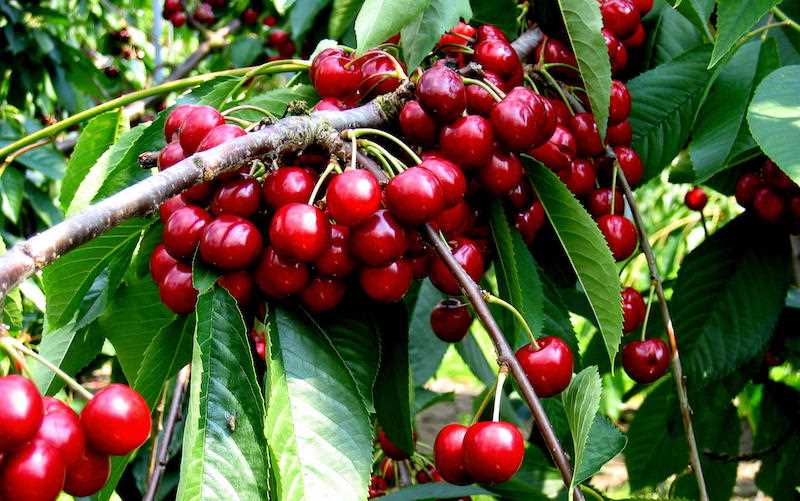

Cherries are ready to harvest when they are fully colored and slightly soft to the touch. Different varieties may have different ripening times, so keep an eye on your trees and pick the cherries when they are at their peak flavor.
9. Enjoy your cherries!
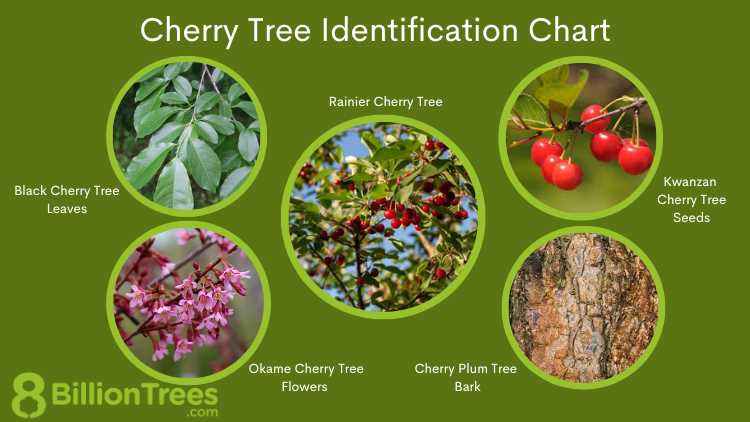

Once your cherries have been harvested, you can enjoy them fresh or use them in delicious recipes like pies, jams, and preserves. Cherries are a versatile fruit that can be enjoyed in a variety of ways.
With these tips, you can successfully grow cherries in your garden and enjoy the bountiful harvest of this delightful fruit.
Cherry Pests and Diseases
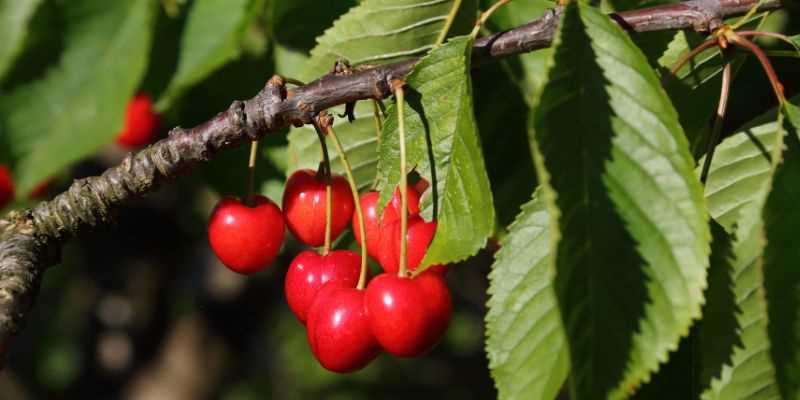

Cherry trees are susceptible to a variety of pests and diseases that can affect the health and productivity of the trees. It is important to monitor your cherry trees regularly and take action at the first sign of any issues to prevent further damage.
Pests
- Cherry fruit fly: This pest lays eggs in cherries, causing them to decay and drop prematurely. To control cherry fruit fly, you can use traps, organic sprays, or insecticides.
- Aphids: These small insects can cause curling of leaves and transmit diseases to cherry trees. Aphids can be controlled with insecticidal soap or other insecticides.
- Cherry slugs: These green insects feed on cherry leaves, causing skeletonized foliage. You can control cherry slugs by removing them by hand or using insecticides.
- Mites: There are different species of mites that can infest cherry trees, causing damage to leaves and fruits. Spider mites and European red mites are common pests that can be controlled with miticides.
Diseases
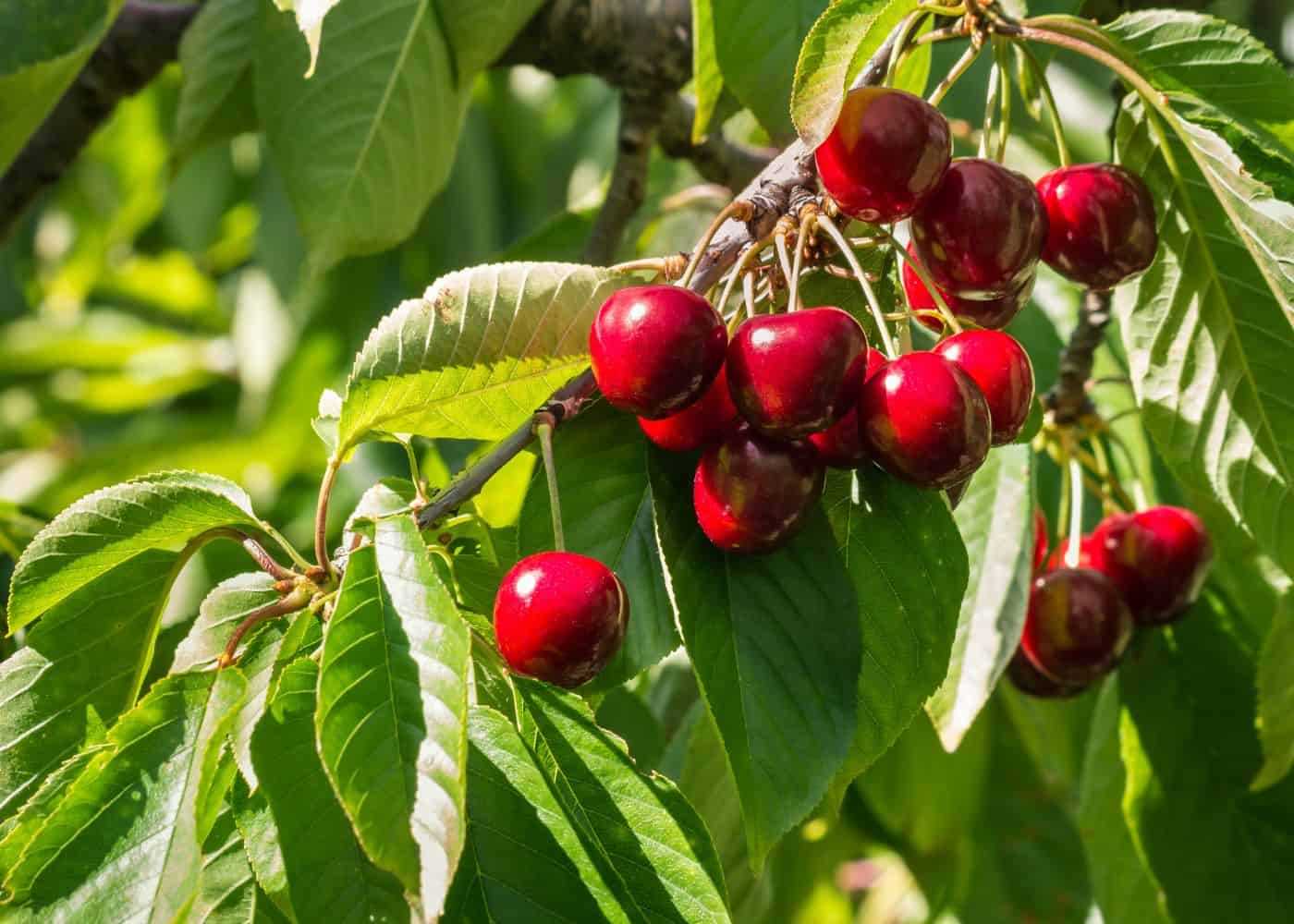

- Cherry leaf spot: This fungal disease causes purple spots on the leaves, which eventually turn yellow and drop. To control cherry leaf spot, you can use fungicides and practice good sanitation.
- Brown rot: This fungal disease affects cherries, causing the fruits to rot and develop brown spore masses. Pruning infected branches and using fungicides can help control brown rot.
- Cherry bacterial canker: This disease causes cankers on branches and trunk, leading to tree decline. Infected parts should be pruned and destroyed, and copper sprays can be used to control cherry bacterial canker.
- Powdery mildew: This fungal disease appears as a white powdery coating on leaves and can hinder cherry tree growth and yield. Fungicides and good air circulation can help manage powdery mildew.
Regular inspection and timely action can help prevent and manage pests and diseases in cherry trees. It is recommended to follow integrated pest management practices and consult with local extension services for specific recommendations in your area.
Harvesting and Storing Cherries
When it comes to harvesting cherries, timing is crucial. Cherries are ripe and ready to be picked when they are fully colored, firm, and slightly sweet. It’s important to note that cherries do not ripen after they are picked, so they should be harvested at their optimal stage of ripeness.
Here are some tips for harvesting cherries:
- Harvest cherries in the morning or evening when temperatures are cooler. This helps to preserve their quality and prevent them from becoming soft or mushy.
- Gently twist the cherries off the stem, being careful not to damage the fruit or the tree.
- Avoid pulling the cherries off the stem, as this can cause the stem to tear and damage the fruit.
- Use a picking bucket or basket lined with a soft material to collect the cherries. This helps to cushion the fruit and prevent bruising.
- Inspect the cherries as you pick them and discard any that are damaged or overripe.
After harvesting cherries, it’s important to store them properly to ensure their freshness and flavor. Here are some guidelines for storing cherries:
- Remove any damaged or overripe cherries before storing.
- Do not wash cherries until you are ready to use them, as excess moisture can cause them to rot.
- Store cherries in a perforated plastic bag or in a shallow container lined with paper towels. This helps to absorb excess moisture and prolong their shelf life.
- Place the cherries in the refrigerator, preferably in the crisper drawer, to keep them cool and fresh.
- Cherries can be stored in the refrigerator for up to a week.
By following these tips for harvesting and storing cherries, you can enjoy the delicious taste of fresh cherries for longer.
Question-answer:
What are the different types of cherries?
There are several different types of cherries, including sweet cherries, sour cherries, and hybrid cherries. Sweet cherries are the most popular and include varieties such as Bing, Rainier, and Lambert. Sour cherries are smaller and more tart, and are commonly used in baking and cooking. Hybrid cherries are a cross between sweet and sour cherries, and offer a blend of sweet and tart flavors.
How do you grow cherries in the garden?
To grow cherries in the garden, you will need to start by selecting a suitable location with well-drained soil and full sun. Cherry trees prefer slightly acidic soil with a pH level between 6.0 and 6.8. It is also important to choose the right variety of cherry tree that is well-suited to your climate. When planting the tree, dig a hole that is large enough to accommodate the root system and place the tree in the hole, making sure the graft union is above the soil line. After planting, water the tree thoroughly and apply a layer of mulch around the base to help retain moisture and suppress weeds. Regularly water and prune the tree as needed, and fertilize it with a balanced fertilizer in the spring and early summer.
What are the different varieties of cherries?
There are many different varieties of cherries, including popular ones such as Bing, Rainier, and Lambert. Bing cherries are large, dark red cherries with a sweet flavor, and are one of the most commonly grown varieties. Rainier cherries are yellow with a reddish blush and have a sweet, delicate flavor. Lambert cherries are dark red to purple and have a rich, sweet-tart flavor. Other varieties include Stella, Brooks, and Lapins.
How long does it take for cherry trees to bear fruit?
Cherry trees typically take 3 to 5 years to bear fruit. The exact time will depend on the variety of cherry tree, growing conditions, and the age and size of the tree when it was planted.
What are the advantages of growing cherries in the garden?
There are several advantages to growing cherries in the garden. First, cherries are a delicious and nutritious fruit that can be enjoyed fresh or used in a variety of recipes. By growing your own cherries, you have control over the quality and freshness of the fruit. Additionally, cherries are a relatively low-maintenance fruit tree, making them suitable for beginner gardeners. Finally, having cherry trees in your garden can enhance the aesthetics of your landscape, as they produce beautiful blossoms in the spring and provide shade during the summer months.
What are the common pests and diseases that affect cherry trees?
Cherry trees can be affected by a variety of pests and diseases. Some common pests include cherry fruit fly, aphids, cherry slug, and cherry leaf spot. Diseases that can affect cherry trees include cherry leaf spot, bacterial canker, and brown rot. Proper prevention and management techniques, such as regular inspection, pruning, and the use of organic pest control methods, can help prevent or minimize the impact of these issues.
Can cherries be grown in containers or pots?
Yes, cherries can be grown in containers or pots, but it is important to choose a dwarf or semi-dwarf variety that is suitable for container gardening. These varieties have a more compact growth habit and are better suited to the limited space provided by containers. When growing cherries in containers, make sure to use a well-draining potting mix and provide regular water and fertilization. Additionally, container-grown cherry trees may require additional protection from extreme weather conditions.







